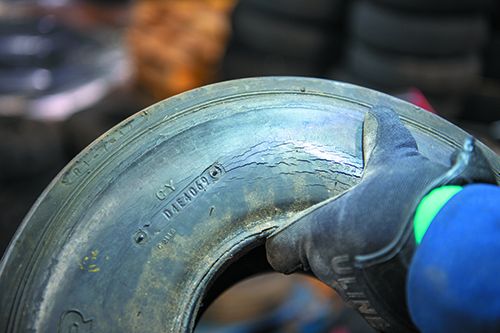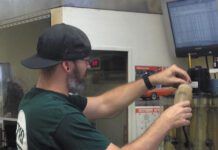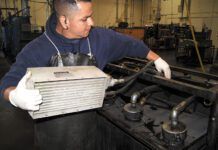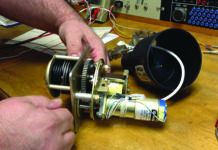Face it, aircraft tires are expensive, so why not do everything you can to make them last? Unfortunately, tires are one of the most neglected items on the preflight checklist. You can likely be doing more to increase their life and more importantly, help avoid a trip into the weeds—or worse— if they fail. Start with the FAA’s AC-43-13-1B chapter 9-14, which deals specifically with tire and tube maintenance. It states the obvious: that a program of tire maintenance can minimize tire failure and increase tire service life. Start with the basics.
• Tread wear. Put your eyes on the tread. Tires should be removed when tread has worn to the base of any groove at any spot, or to a minimum depth as specified by the tire or aircraft manufacturer. Tires worn to fabric in the tread area should be removed regardless of the amount of tread remaining.
• Uneven wear. This doesn’t necessarily mean you need to shotgun the tire. If tread wear is excessive on one side, the tire can be dismounted and turned around, providing there is no exposed fabric. But sort of like on a vehicle, you should dig further to find out why the tires are wearing unevenly. Gear misalignment causing this condition should be corrected.
• Tread cuts. If you find suspect damage, do not probe cuts or embedded foreign objects in an inflated tire. Instead, mark them with a crayon or chalk. Remove tires that have any cuts into the carcass ply. Also remove them if you find cuts extending more than half of the width of a rib and deeper than 50 percent of the remaining groove depth. You’re also looking for weather damage—cracking, cuts and snags extending down to the tire’s carcass ply in the sidewall and bead areas. See the main image below. Look for bulges in any part of tire tread, sidewall or bead indicating a separation in structure. Cracking in a groove that exposes fabric or if the cracking undercuts the tread ribs? Time to pull the tire.
• Flat spots. Yeah, we’ve all done it. In general, you might not have to shotgun a tire blemished from skidding and hydroplane burns unless there’s exposed fabric.
• Beads. Inspect bead areas next to wheel flanges for damage due to excessive heat, especially if there has been brake drag or severe braking. Stay off the brakes during taxi, and heels on the floor during landing.
• Surface condition. The surface condition of a tire can be inspected with the tire on the aircraft. The tread should be checked for abnormal wear (don’t forget to roll the plane forward to check the entire tire). If the tread is worn in the center of the tire but not on the edges, this indicates that the tire is overinflated and the operational air pressure should be reduced. On the other hand, a tire worn on the edges, not in the center, indicates underinflation. Keep a tire gauge in the cabin and use it.
• Inflate properly. Underinflation will cause excessive tire wear and imbalance and overinflation stresses the tire.
TREAT ‘EM RIGHT
Other than inspection, use common sense and extra care to keep tires healthy. When washing the aircraft, protect the tires from any fluid (including harsh soaps and degreasing agents) other than plain water.
Also, pay attention to simple operational techniques such as moving the aircraft forward to straighten the nosewheel before setting the parking brake, or before pushing the throttles forward during an engine runup or takeoff roll. This can reduce the stress on the nose tire and wheel.
Bottom line is that checking the tire pressure often, inspecting them carefully during each preflight and using extra care to avoid unnecessary stress during ground ops (and landing) are easy ways to make them last.





